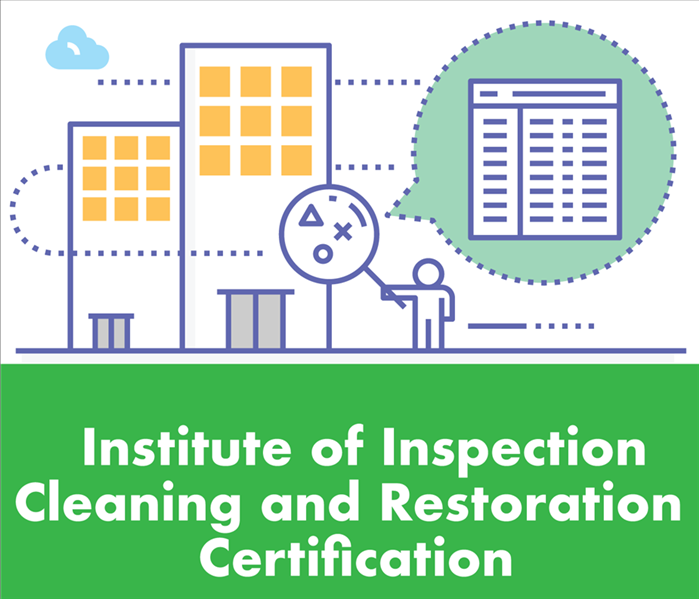4 Ways the IICRC Promotes Better Cleaning and Restoration
6/11/2020 (Permalink)
4 Ways the IICRC Promotes Better Cleaning and Restoration
Cleaning up after a disaster is a big job for even the most advanced emergency remediation team. When workers come to a site they must be prepared for a variety of situations. They might face dirty water from a flood or a sewage backup, or they could encounter extensive smoke and soot damage from a fire. The Institute of Inspection Cleaning and Restoration Certification is a vital certification source for the restoration industry. The IICRC promotes high standards for the cleaning of water damage, mold mitigation, and carpeting and upholstery cleaning. The organization, founded in 1972, helps consumers and companies in several ways.
1. Education. The IICRC is a leader in the educational process for cleaning and restoration technicians. The organization does not operate schools for certification, but it does approve schools and instructors to teach its recommendations and to grant a mitigation certificate to students. The SERVPRO franchise runs schools and programs approved by the organization.
2. Values. The organization promotes the values of integrity, excellence, expertise, responsibility, and respect in all of its activities. It looks to be a source of professional knowledge for the cleaning and restoration industry.
3. Standards. The organization establishes voluntary standards to help guide technicians as they remediate a home or business. These standards have been developed through a rigorous process that sought the input of a wide-range of professionals.
4. Requirements. In most cases, certification in a particular program requires the passing of an exam. This ensures certified technicians have completed the course and understand its main concepts.
The IICRC and SERVPRO work together to make sure technicians are trained in the most important techniques and practices in the industry. A local mitigation franchise in Gilberts, IL, has access to ongoing training and programs through a variety of sources. The goal is to prepare workers for the challenges of dealing with any disaster, no matter how large or small.

 24/7 Emergency Service
24/7 Emergency Service
